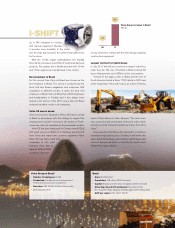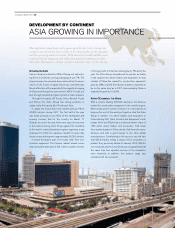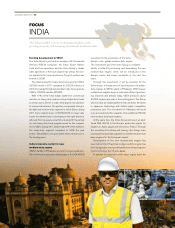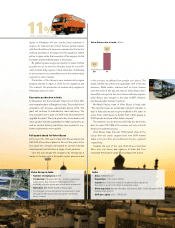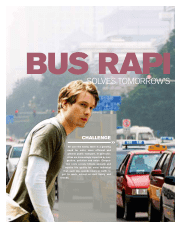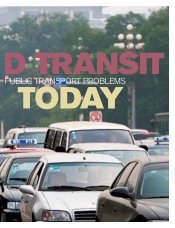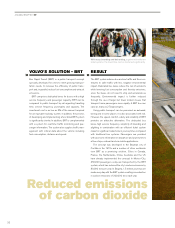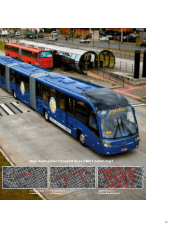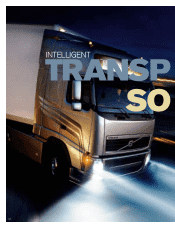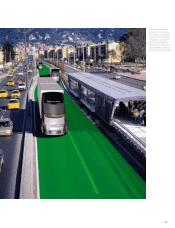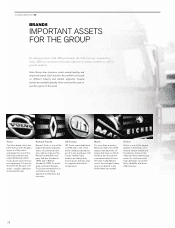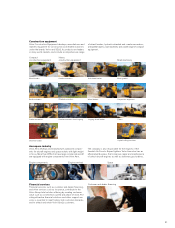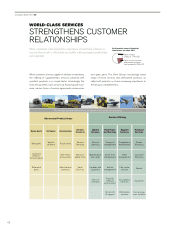Volvo 2011 Annual Report Download - page 36
Download and view the complete annual report
Please find page 36 of the 2011 Volvo annual report below. You can navigate through the pages in the report by either clicking on the pages listed below, or by using the keyword search tool below to find specific information within the annual report.
A GLOBAL GROUP 2011
Bus Rapid Transit (BRT) is a public transport concept
specially developed for cities to meet growing transpor-
tation needs, to increase the efficiency of public trans-
port and, in parallel, reduce fuel consumption and exhaust
emissions.
BRT comprises dedicated lanes for buses with a high
service frequency and passenger capacity. BRT can be
compared to public transport by rail regarding travelling
time, service frequency, punctuality and capacity. The
investment cost is as low as 5% of the amount required
for an equivalent subway system. In addition, the process
of developing and implementing a functional BRT system
is significantly shorter. In addition, BRT is complemented
with a system for real-time traffic monitoring and pas-
senger information. The system also supplies traffic man-
agement with critical data about the vehicle including
fuel consumption, distance and speed.
The BRT system reduces bus and car traffic and thus con-
tributes to safer traffic with less negative environmental
impact. Dedicated bus lanes reduce the risk of accidents
while lowering fuel consumption and thereby emissions,
since the buses do not need to stop and accelerate as
frequently. Environmental impact is further reduced
through the use of larger but fewer modern buses that
transport more passengers more rapidly. A BRT bus can
carry as many as 270 passengers.
Using public transport can be perceived as awkward,
boring and in some places it is also associated with risk.
However, the speed, comfort, safety and reliability of BRT
provides an attractive alternative. The dedicated bus
lanes, high service frequency, simplicity of boarding and
alighting in combination with an efficient ticket system
make for significant reductions in journey times compared
with traditional bus systems. Passengers are provided
with access to information on departure and journey times
at bus stops, onboard and via mobile applications.
The concept was developed in the Brazilian city of
Curitiba in the 1970s and a number of cities worldwide
view BRT as a promising solution. Cities in Canada,
France, the Netherlands, China, Australia and the US
have already implemented the concept. In Mexico City,
450,000 passengers a day are transported by the BRT
system, which has reduced the city’s carbon emissions by
80,000 tons per year. In Bogota, 1.5 million journeys are
made every day with the BRT system resulting in a reduction
in carbon emissions of 300,000 tons each year.
RESULT
With easy boarding and debarking, together with efficient
ticket systems, the travel time can be shortened significantly.
VOLVO’S SOLUTION – BRT
Reduced emissions
of carbon dioxide
32



